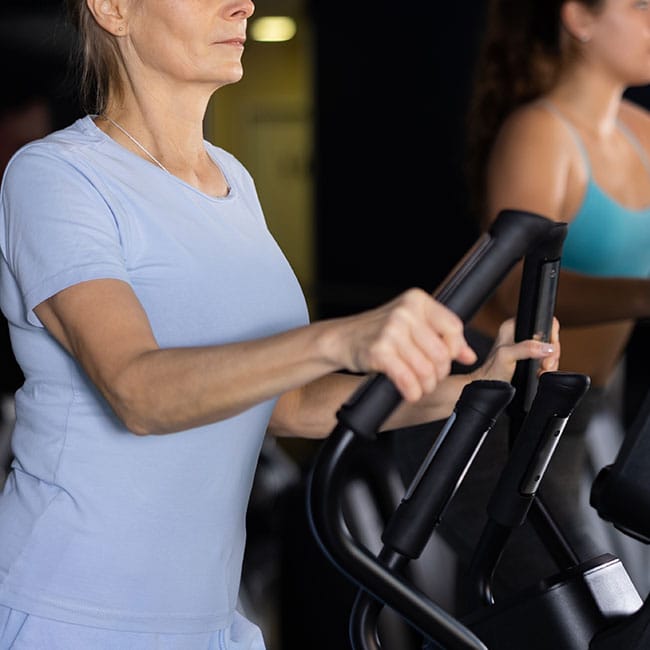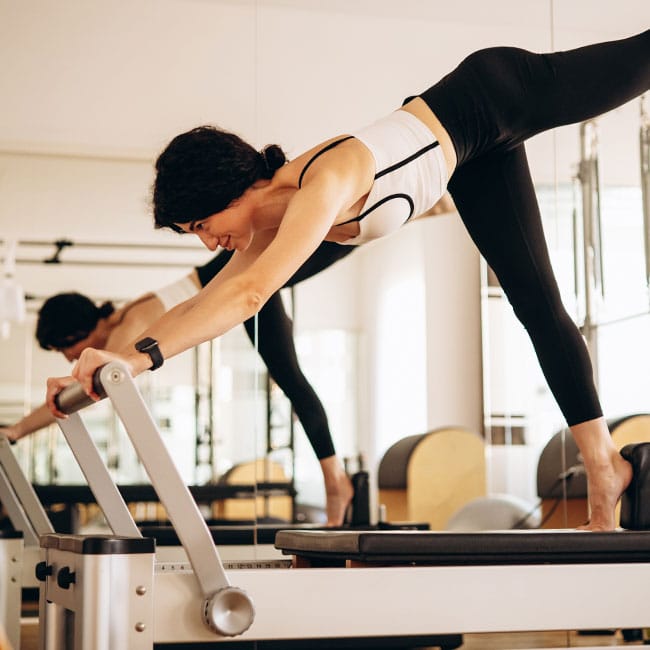As we age, keeping active and maintaining a healthy lifestyle become increasingly important for our overall health, both physically and mentally. Consistent exercise not only helps us stay fit but also plays a key role in maintaining our physical and mental health. For people over 40, finding the right exercise routine becomes even more crucial as our bodies undergo natural changes that may require specific fitness approaches. Today, trainers and fitness experts are emphasizing the importance of exercise tailored to this age group and offering insights into the best practices to keep our bodies in good shape as we navigate the journey of aging.
In this article, we’ll explore the exercise recommended by trainers as an excellent way to stay fit and healthy beyond 40. We spoke to Andrew Lenau, a senior coach and CPT, to reveal to us the one single exercise you can start performing right now to keep your body fit. Lenau shared that squats are one of the best exercises for keeping fit over 40.


Squats
Lenau breaks down the benefits of squats into five different categories: muscle mass preservation, bone density support, enhanced mobility and balance, and boosted metabolism. "As we age, we naturally experience a decline in muscle mass, which can lead to reduced strength and a less toned appearance. Squats, being a resistance exercise, effectively counteract this muscle loss. By consistently challenging your muscles with squats, you can maintain and even build lean muscle mass, promoting a stronger, more youthful physique," Lenau states.
He also points out the benefits of squats for health issues such as osteoporosis, which is very common as we age. However, squats, a weight-bearing exercise, can help by applying stress to your bones; squats stimulate them to become stronger and denser. This increase in bone density provides vital support, effectively reducing the risk of fractures and preserving the structural integrity of your skeletal system. By executing squats correctly, you activate not only your lower body muscles, such as the quadriceps, hamstrings, and glutes, but also your core, back, and upper body muscles to maintain stability.
Lenau also points out that, "As we age, mobility and balance become crucial aspects of maintaining an active and independent lifestyle. Squats are a functional movement that mimics everyday activities like sitting down and standing up. Regularly practicing squats improves your joint flexibility, range of motion, and overall balance, making it easier to perform daily tasks with confidence and grace."
Finally, Lenau shares how effective squats can be as our metabolism slows down with age and we start watching our weight more frequently. "Squats are a highly effective exercise for stimulating the release of growth hormone and testosterone, both of which play critical roles in regulating metabolism and promoting fat loss. This metabolic boost is particularly valuable as our metabolism tends to slow down with age."

How To Perform Squats
To minimize any risk of injury and fully reap the benefits of squats, Lenau lists out how to perform this beneficial exercise in simple steps:
Stand with your feet shoulder-width apart and toes slightly turned out. Initiate the movement by pushing your hips back as if you're sitting into an imaginary chair. Lower your body by bending your knees, keeping them in line with your toes, and ensuring they don't extend beyond them. Keep your chest up, shoulders back, and maintain a neutral spine throughout the movement. Lower yourself until your thighs are parallel to the ground or as low as your mobility allows. Push through your heels to return to the starting position, extending your hips and knees fully. Breathe naturally throughout the exercise and avoid rounding your back or letting your knees collapse inward. Start with bodyweight squats and gradually add resistance using dumbbells or barbells as your strength and confidence increase. Aim for 2-3 sets of 10-15 repetitions in each set, allowing adequate rest between sets.


























